Starting a flower garden is a rewarding and enjoyable hobby that can transform your outdoor space into a vibrant and colorful haven. For beginners, the process may seem challenging, but with the right guidance, anyone can cultivate a beautiful garden. Flower gardening offers numerous benefits beyond aesthetic appeal. It provides a creative outlet, reduces stress, and promotes physical activity.
Additionally, flowers attract pollinators like bees and butterflies, which are crucial for a healthy ecosystem. Understanding the basics of flower gardening is essential to avoid common drawbacks and ensure success. This guide will take you through each step of Starting a Flower Garden for Beginners. You will learn how to choose the right location, select suitable flowers, and design an eye-catching layout.
Furthermore, we’ll cover essential soil preparation techniques, proper planting methods, and effective care routines. Troubleshooting tips and sustainable gardening practices will also be discussed to help you create a progressing, eco-friendly garden. Whether you have a small balcony or a vast yard, this guide is outlined to meet your needs and inspire confidence, to equip you with the knowledge and skills to start your flower garden and enjoy the beauty and satisfaction it brings.
Step-by-step guide to Flower Garden for Beginners
1. Planning Your Flower Garden
Choosing the Right Location
The first step in starting a flower garden is choosing the right location. Most flowers require at least six hours of direct sunlight per day, so look for a sunny spot in your yard. However, some flowers bloom better in partial shade, so it’s important to know the light requirements of the flowers you want to plant.
- Assessing Sunlight and Shade: Observe your garden area throughout the day to understand how much sunlight it receives. This will help you select appropriate flowers for your garden’s light conditions.
- Considering Soil Quality and Drainage: Good soil is essential for healthy plants. Conduct a soil test to determine its pH and nutrient levels. Ensure the area has good drainage, as waterlogged soil can damage plant roots.
Selecting Flower Types
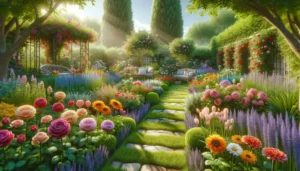
Choosing the right flowers is crucial for a successful garden. Consider starting with a mix of annuals and perennials.
- Annuals vs. Perennials: Annuals bloom for one season and need to be replanted each year, while perennials come back year after year. Mixing both can provide continuous colour and variety.
- Native Plants and Their Benefits: Native plants are adapted to your local climate and soil, making them easier to grow and maintain. They also support local wildlife.
- Popular Flowers for Beginners: Some beginner-friendly flowers include marigolds, zinnias, petunias, and daisies. These are hardy and require minimal maintenance.
Designing Your Garden Layout
A well-planned layout glorifies the beauty and functionality of your garden.
- Creating a Garden Plan: Sketch a simple plan of your garden, indicating where each flower type will be planted. This helps visualize the final look and ensures proper spacing.
- Colour Schemes and Themes: Choose a colour scheme that complements your home and personal style. Consider themes like cottage garden, tropical paradise, or butterfly garden.
- Spacing and Layering for Visual Appeal: Arrange taller plants at the back or center and shorter ones at the front. This layering creates depth and visual interest.
Preparing the Soil
Healthy soil is the foundation of a well-oriented, blooming garden.
- How to Test Soil pH and Nutrients: Use a soil testing kit to check the pH and nutrient levels. Most flowers prefer slightly acidic to neutral soil (pH 6.0-7.0).
- Adding Organic Matter and Compost: Improve soil structure and fertility by adding compost or well-rotted manure. This enriches the soil with essential nutrients.
Clearing and Tilling the Ground
Preparing the ground ensures a good start for your plants.
- Removing Weeds and Debris: Clear the area of weeds, rocks, and wastes. Weeds compete with your flowers for nutrients and water.
- Tilling Techniques for Beginners: Loosen the soil to a depth of at least 12 inches using a garden fork or tiller. This helps roots penetrate easily and improves aeration.
2. Planting Your Flowers
Starting from seeds vs. buying plants. Decide whether to start from seeds or purchase young plants.
- Pros and Cons of Each Method: Seeds are cost-effective and offer a wider variety, but they require more time and care. Young plants are easier to grow but can be more expensive.
- Seed Starting Indoors vs. Direct Sowing: Some seeds need to be started indoors several weeks before the last frost, while others can be sown directly in the garden.

Planting Techniques
Proper planting techniques set the stage for healthy growth.
- Proper Planting Depth and Spacing: Follow the instructions on seed packets or plant labels. Plant at the recommended depth and spacing to avoid overcrowding.
- Watering Immediately After Planting: Water the newly planted flowers thoroughly to settle the soil and eliminate air pockets around the roots.
3. Caring for Your Flower Garden
Watering Tips and Techniques
Consistent watering is crucial for your garden’s success.
- How Often to Water: Most flowers need about 1 inch of water per week. Adjust based on rainfall and specific plant needs.
- Best Time of Day to Water: Water in the early morning or late afternoon to minimize evaporation and reduce the risk of fungal diseases.
Fertilizing Your Flowers
Nourish your plants with the right fertilizers.
- Types of Fertilizers and Their Uses: Choose balanced fertilizers (10-10-10) or those specific to flowering plants. Follow the package instructions for application rates.
- Organic vs. Synthetic Options: Organic fertilizers improve soil health over time, while manufactured fertilizers provide immediate nutrients. Both have their place in the garden.
Weed and Pest Control
Keep your garden healthy by managing weeds and pests.
- Identifying Common Garden Pests: Learn to recognize pests like aphids, snails, and caterpillars. Early detection is key to control.
- Natural and Chemical Control Methods: Use natural remedies like neem oil or introduce beneficial insects. Chemical controls should be a last resort and used carefully.
4. Maintaining Your Garden Throughout the Seasons
Seasonal Care Tips
Your garden needs different care at different times of the year.
- Spring: Preparing and Planting: Start seeds indoors, prepare the soil, and plant cool-season flowers.
- Summer: Deadheading and Feeding: Remove spent blooms to encourage more flowers. Apply fertilizer as needed.
- Fall: Trimming and Mulching: Cut back perennials, clean up waste, and apply mulch to protect roots from winter cold.
- Winter: Protecting Your Garden: Cover tender plants with frost cloths, and move potted plants indoors if necessary.
5. Troubleshooting Common Problems
Dealing with Poor Growth or No Blooms
Identify and resolve common issues that affect flower growth.
- Diagnosing Common Issues: Check for signs of nutrient deficiencies, improper watering, or pest infestations.
- Solutions for Improving Growth: Adjust watering schedule, apply appropriate fertilizers, and address pest problems promptly.
Managing Diseases and Pests

Keep your garden disease-free with proactive measures.
- Identifying Signs of Disease: Look for discoloured leaves, spots, or wilting. Early detection can prevent the spread.
- Treatment and Prevention Strategies: Remove affected plants, use disease-resistant varieties, and maintain good garden hygiene.
6. Enhancing Your Garden’s Aesthetic Appeal
Incorporating Garden Accessories
Add decorative elements to enhance your garden’s beauty.
- Adding Garden Decor and Features: Include items like garden gnomes, birdbaths, and trellises to create focal points and add character.
- Using Mulch and Ground Cover Effectively: Mulch helps retain moisture and suppress weeds, while ground covers fill in gaps and prevent soil erosion.
Creating Wildlife Habitats
Attract beneficial wildlife to your garden.
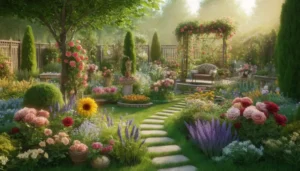
- Attracting Beneficial Insects and Birds: Plant flowers that attract pollinators like bees and butterflies. Provide food and shelter for birds.
- Building Birdbaths and Feeders: Install birdbaths and feeders to invite birds, adding life and movement to your garden.
7. Sustainable Gardening Practices
Eco-Friendly Gardening Tips
Adopt practices that benefit the environment. Here are 10 Sustainable Gardening Tips
- Composting and Recycling Garden Waste: Turn kitchen scraps and garden waste into nutrient-rich compost to improve soil health.
- Conserving Water with Efficient Irrigation: Use drip irrigation or soaker hoses to minimise water waste and ensure plants receive adequate moisture.
Using Native Plants and Organic Methods
Promote sustainability with native plants and organic techniques.
- Benefits of Native Plants: Native plants are adapted to local conditions, require less water, and support local ecosystems.
- Reducing Chemical Use in Your Garden: Opt for organic pest control and fertilizers to protect beneficial insects and soil health.
Summary
Starting a flower garden for beginners involves careful planning, soil preparation, proper planting techniques, and ongoing care. By following these steps, you can create a beautiful and thriving flower garden that brings joy and satisfaction for years to come. The key to a successful flower garden lies in understanding the needs of your plants and creating a supportive environment for them to flourish. Selecting the right flowers, whether annuals, perennials, or native plants, ensures a colourful display throughout the seasons. Proper soil preparation, including testing and amending soil, sets the foundation for healthy growth.
Consistent watering, fertilising, and pest control keep your garden vibrant and adaptable. Seasonal maintenance tasks, such as deadheading, trimming, and mulching, help your garden advance year-round. Additionally, incorporating sustainable practices, like composting and using organic methods, supports the environment and ensures the adequate health of your garden. By troubleshooting common problems and enhancing your garden’s aesthetic appeal with accessories and wildlife habitats, you create a welcoming space for both plants and beneficial creatures. With dedication and the right approach, your flower garden will not only beautify your home but also provide a rewarding and healthy hobby.
FAQ
Q1: What are the best flowers for beginner gardeners?
For beginners, some of the best flowers include marigolds, zinnias, petunias, and daisies. These flowers are hardy, easy to grow, and require minimal maintenance.
Q2: How often should I water my flower garden?
Most flowers need about 1 inch of water per week. It’s best to water deeply and less frequently rather than shallowly and often. Adjust based on rainfall and the specific needs of your plants.
Q3: What should I do if my plants aren’t blooming?
If your plants aren’t blooming, check for proper light exposure, soil quality, and watering practices. Ensure they’re not over-fertilized with nitrogen, which can promote leaf growth over flowers.
Q4: How can I keep pests away from my flowers?
To keep pests away, regularly inspect your plants for signs of infestation, use natural pest control methods like neem oil, and encourage beneficial insects like ladybugs. Keep your garden clean and free of debris.
Q5: When is the best time to start planting flowers?
The best time to start planting flowers depends on your local climate. Generally, spring is ideal for most regions. However, some hardy flowers can be planted in fall for early spring blooms.

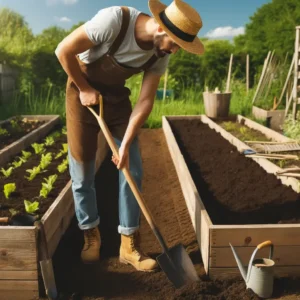
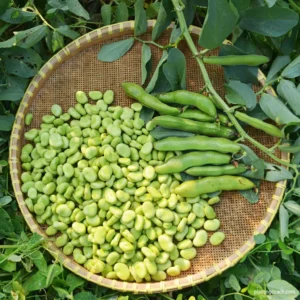
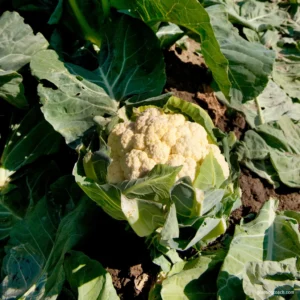
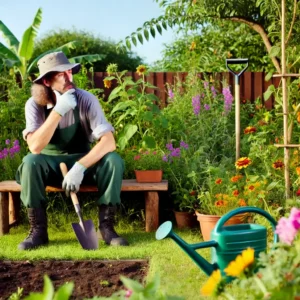

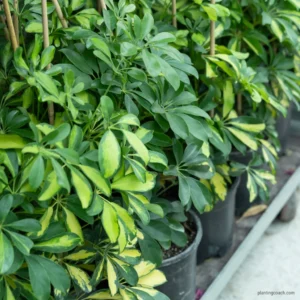
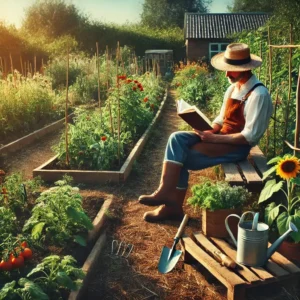
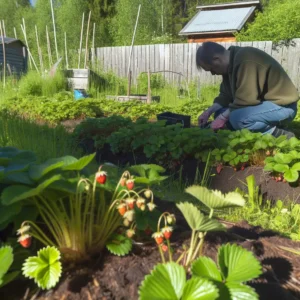
1 thought on “7 Step complete guide to Flower Garden for Beginners”